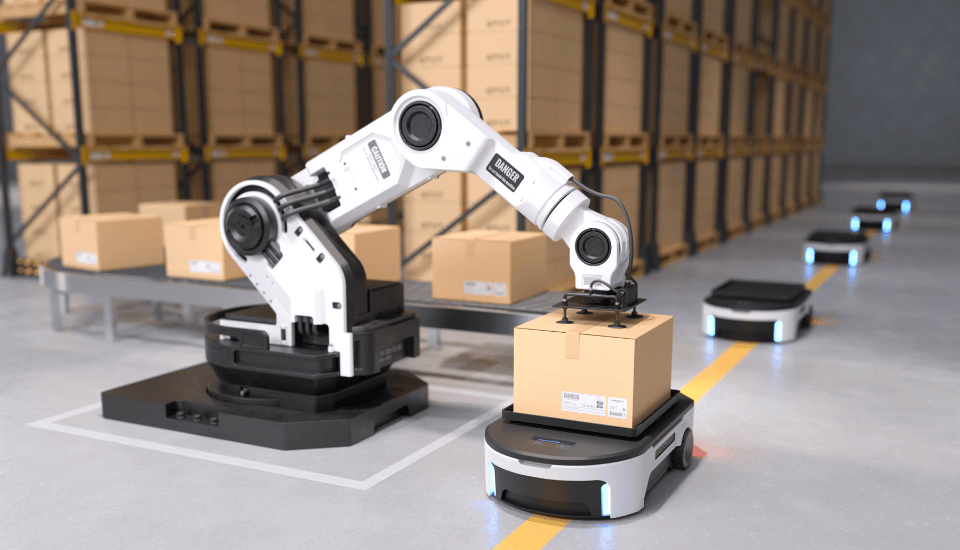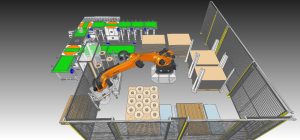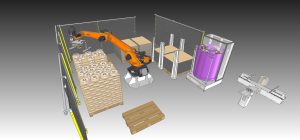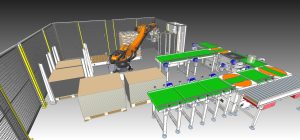
Pick-and-place robots, innovative yet sustainable systems
Pick-and-place is, as the Anglophone locution suggests, an automated system where corporate robots are tasked with picking up a product from one location to deposit it in another. First, they work in so many industries-including major manufacturing contexts – they stand out for their versatility. From automotive to pharmaceuticals, pick-and-place has also gained space in packaging and logistics where such performative robots load, unload goods, sort and organize the workspace dedicated to shipping, load containers onto ships. Workers who used to manage it, are given a chance to perform more challenging, rewarding tasks. Some European companies are increasingly relying on picking due to its efficiency and with robots capable of handling hundreds of containers every hour. Finally, Vision system, gripping, Control System are three essential components.
Pick-and-place programming operations
Picking robots can be classified according to workload or their components. Advanced sensors and sophisticated cameras make a difference. First, by Using the vision system, the robots move and recognize itmes. Next, they use slow, but precise mechanical grippers or vacuum handling system to pick them up. Unquestionably, the pick-and-place system responds to manifacturing requirements, as precision and speed are two indispensable features. Programming in pick-and-place is critical, where the Plc-an acronym for Programmable logic computer-works to ensure machines move properly within well-defined paths. Robotic gantries or robotic gantries are among the most popular in picking. Palletizing and depalletizing are two of the most common handling operations. The former makes it possible for goods to be moved from the conveyor to the pallet, whereas the latter means the robots follow the reverse route

Adaptive applications
Collaborative robotics is the pivotal principle of pick and place, as the more precise and efficient than the traditional workforce robots are tasked with the toughest tasks. Due to their versatility, they can be found in manifacturing companies from different sectors; therefore, there is a lot beyond identification and picking of a product, as well as the above mentioned palletising depalletising process. Indeed, the application of automated systems in picking implies
- Loading and unloading,Pick-and-place robots are used to load and unload trucks, and load containers onto ships
- Sorting and organizing packages
- Inspection: Grasping robots handle and inspect products for defects or irregularities
- Assembly: Automated systems can put products onto a production line.
- Labeling: Robots apply labels to products or packaging.
- Sorting, as Pick-and-place robots sort products by size, shape, or other criteria.
- Dispensing: Some robots are designed to dispense liquids or powders onto products or into containers.

Anthropomorphic, quality control robots
Flexibility, safety, reduced labour costs. Robots designed to perform pick-and-place operations offer several advantages, but when choosing an automated system, it is important to consider the specific needs of production and individual work steps. In addition to the above mentioned operations, their use also extends to
-
packaging, since Robots can wrap products in plastic or other materials, placing items in boxes
- Cutting, folding, and shaping: Pick-and-place robots can manipulate materials such as cardboard or plastic.
- Welding, that’s why robots are increasingly popular in metalwork
- Sealing, as they also seal products in packaging
- Die-cutting
- Stamping and printing: robots can stamp or print on products or packaging
In some European companies, anthropomorphic robots sort and stack panels for furniture assembly. Furthermore, there are quality control robots that sort food – such as fruit or vegetables.
Pick-and-place companies, innovation and compliancy are the key.
Companies differ from each other, no matter if they are from the same sector o geographically close. However, when they choose and use pick and place robots, they will find out how reliable, stable, flexible these automated system are. Automation helps avoid errors as automated systems ensure compliancy with hygienic and sanitary standards. Such robots are a real flagship of Industry 4.0, boosting supply chain perfomance. That means, since warehouse operations are started. LGA is an excellence-driven company that relies on sustainable innovation, which supports and does not replace workforce. We design and implement automated solutions because we believe competence and experience are the key to respond to customers’ former demands and new expectations. On one hand, They require increased productivity, faster deliveries and intermodal logistics. On the other, they hope new technologies will pave the way for a new, both efficient and sustainable vision.

Get in Touch
You will find yourself working in a true partnership that results in an incredible experience, and an end product that is the best.
Email us
support@gmail.com

